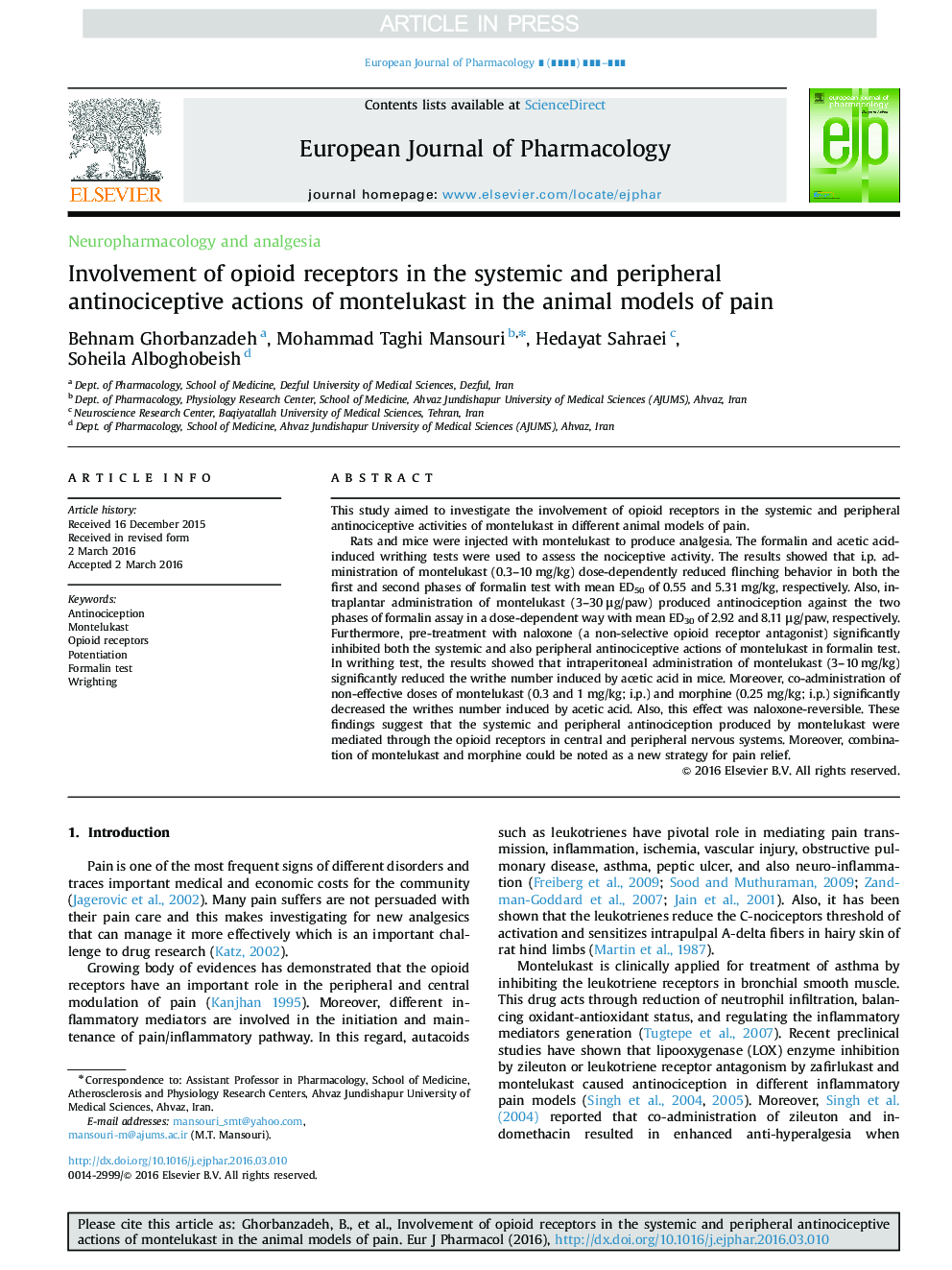| Article ID | Journal | Published Year | Pages | File Type |
|---|---|---|---|---|
| 5826775 | European Journal of Pharmacology | 2016 | 8 Pages |
Abstract
Rats and mice were injected with montelukast to produce analgesia. The formalin and acetic acid-induced writhing tests were used to assess the nociceptive activity. The results showed that i.p. administration of montelukast (0.3-10 mg/kg) dose-dependently reduced flinching behavior in both the first and second phases of formalin test with mean ED50 of 0.55 and 5.31 mg/kg, respectively. Also, intraplantar administration of montelukast (3-30 μg/paw) produced antinociception against the two phases of formalin assay in a dose-dependent way with mean ED30 of 2.92 and 8.11 μg/paw, respectively. Furthermore, pre-treatment with naloxone (a non-selective opioid receptor antagonist) significantly inhibited both the systemic and also peripheral antinociceptive actions of montelukast in formalin test. In writhing test, the results showed that intraperitoneal administration of montelukast (3-10 mg/kg) significantly reduced the writhe number induced by acetic acid in mice. Moreover, co-administration of non-effective doses of montelukast (0.3 and 1 mg/kg; i.p.) and morphine (0.25 mg/kg; i.p.) significantly decreased the writhes number induced by acetic acid. Also, this effect was naloxone-reversible. These findings suggest that the systemic and peripheral antinociception produced by montelukast were mediated through the opioid receptors in central and peripheral nervous systems. Moreover, combination of montelukast and morphine could be noted as a new strategy for pain relief.
Related Topics
Life Sciences
Neuroscience
Cellular and Molecular Neuroscience
Authors
Behnam Ghorbanzadeh, Mohammad Taghi Mansouri, Hedayat Sahraei, Soheila Alboghobeish,
